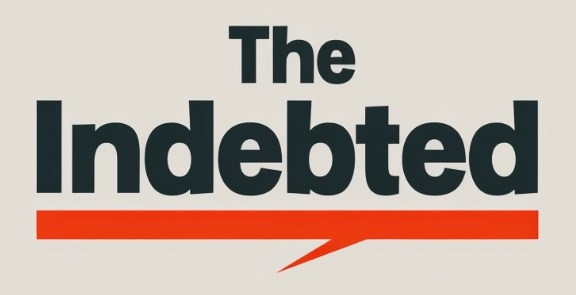Navigating the challenges of medical debt can be a daunting task for many Americans. With the rising cost of healthcare, it’s no surprise that medical debt is a significant concern for many individuals and families. According to a recent study, medical debt is the leading cause of bankruptcy in the United States.
Dealing with medical debt can be overwhelming, but it’s essential to understand the options available to you. There are various ways to manage medical debt, including negotiating with healthcare providers, applying for financial assistance programs, and seeking the help of a debt counselor. It’s crucial to take action as soon as possible to avoid further financial strain and potential legal consequences.
In this article, I will provide a roadmap to effectively navigating medical debt recovery. I will cover the different options available to manage medical debt, the potential legal and reputational risks associated with debt collection, and the recent actions taken by the federal government to ease the burden of medical debt. By the end of this article, you will have a better understanding of how to manage medical debt and the resources available to help you through the process.
Understanding Medical Debt in America
As healthcare costs continue to rise in America, medical debt has become an increasingly pressing issue for millions of Americans. In this section, I will explore some of the key factors that contribute to medical debt and the challenges associated with managing it.
The Rise of Health Care Costs
One of the primary drivers of medical debt is the high cost of healthcare in the United States. According to data from the Centers for Medicare & Medicaid Services, healthcare spending in the U.S. is projected to reach $6.2 trillion by 2028, up from $3.5 trillion in 2017. This increase in spending is due to a variety of factors, including the rising cost of prescription medications, the increasing prevalence of chronic diseases, and the high cost of medical technologies and procedures.
Insurance Coverage and Out-of-Pocket Expenses
Another key factor that contributes to medical debt is the complex nature of health insurance coverage and out-of-pocket expenses. While many Americans have health insurance, most plans require individuals to pay a portion of their healthcare costs out of pocket, such as copays, deductibles, and coinsurance. These out-of-pocket expenses can add up quickly, particularly for individuals with chronic health conditions or those who require expensive medical procedures or medications.
Legislation Impacting Medical Debt
In recent years, there have been several legislative efforts aimed at addressing the issue of medical debt in America. The Affordable Care Act (ACA), for example, included provisions designed to protect consumers from excessive medical debt, such as limits on out-of-pocket expenses and protections against balance billing. Additionally, the Consumer Financial Protection Bureau (CFPB) has taken steps to regulate medical billing and collections practices, including requiring healthcare providers to provide patients with clear and accurate billing information and prohibiting certain debt collection practices.
Despite these efforts, however, many Americans continue to struggle with significant medical debt. For example, a recent analysis of government data revealed that Americans owe an estimated $220 billion in medical debt, with 6% of adults owing over $1,000 and 1% owing more than $10,000. While financial aid programs and other forms of assistance are available to help individuals manage their medical debt, navigating the complex healthcare system and accessing these resources can be a significant challenge for many Americans.
The Impact of Medical Debt on Consumers
Medical debt can have a significant impact on the financial, emotional, and mental well-being of consumers. In this section, we will explore some of the key challenges that consumers face when dealing with medical debt.
Credit Scores and Financial Stability
One of the most significant impacts of medical debt is on a consumer’s credit score. Medical bills that are not paid on time can be sent to debt collectors, which can negatively impact a consumer’s credit score. This can make it more difficult to obtain credit cards, loans, and other forms of credit in the future. Additionally, consumers may face higher interest rates and fees due to their lower credit score.
To mitigate the impact of medical debt on credit scores, consumers should be proactive in communicating with their healthcare providers and insurance companies. They should also be aware of their credit score and monitor it regularly to ensure that any errors are corrected promptly.
Debt Collection and Consumer Rights
Debt collection practices can be another significant challenge for consumers dealing with medical debt. Collection agencies may use aggressive tactics to collect debts, including harassing phone calls and letters. Consumers have rights under the Fair Debt Collection Practices Act (FDCPA), which limits the actions that debt collectors can take.
Consumers should be aware of their rights under the FDCPA and should report any violations to the Consumer Financial Protection Bureau (CFPB). Additionally, consumers should be proactive in negotiating payment plans with their healthcare providers and collection agencies to avoid further damage to their credit score.
The Emotional and Mental Toll of Debt
Medical debt can also take a significant emotional and mental toll on consumers. The stress of dealing with debt can lead to anxiety, depression, and other mental health issues. Additionally, consumers may feel ashamed or embarrassed about their financial situation, which can further exacerbate these issues.
To mitigate the emotional and mental toll of medical debt, consumers should seek support from family, friends, and mental health professionals. They should also prioritize self-care activities, such as exercise, meditation, and hobbies, to help manage stress and anxiety. Finally, consumers should be transparent with their healthcare providers and collection agencies about their financial situation and seek assistance when needed.
In conclusion, medical debt can have a significant impact on consumers’ financial, emotional, and mental well-being. By being proactive in communicating with healthcare providers and insurance companies, understanding their rights under the FDCPA, and prioritizing self-care activities, consumers can navigate the challenges of medical debt and mitigate its impact on their lives.
Navigating Debt Resolution and Relief Options
When dealing with medical debt, there are several options available for resolution and relief. In this section, I will discuss negotiating with healthcare providers, exploring government and nonprofit assistance, and bankruptcy and legal considerations.
Negotiating with Healthcare Providers
One option for resolving medical debt is negotiating with healthcare providers. This can involve discussing payment plans or requesting discounts. It is important to be upfront and honest about your financial situation and to communicate with your healthcare provider as soon as possible. Some providers may be willing to work with you to find a solution that works for both parties.
Exploring Government and Nonprofit Assistance
Another option is exploring government and nonprofit assistance. The federal government and various nonprofits offer financial assistance programs for those who qualify, such as Medicaid and charity care. The No Surprises Act also provides some protections against surprise medical bills. It is important to research and understand the eligibility requirements and application processes for these programs.
Bankruptcy and Legal Considerations
In some cases, bankruptcy or legal action may be necessary to resolve medical debt. It is important to understand the potential consequences of these options and to seek legal advice before taking any action. Bankruptcy can impact credit reporting and may not discharge all medical debt. Legal action may also have financial and legal consequences.
Overall, navigating medical debt can be challenging, but there are options available for resolution and relief. It is important to research and understand the available options, communicate with healthcare providers, and seek legal advice when necessary. Lower-income individuals may be particularly vulnerable to medical debt, but there are resources available to help. The National Consumer Law Center and the Department of Health and Human Services offer additional information and resources on medical debt.
Public Perception and Advocacy
Navigating the challenges of medical debt can be daunting, especially when it comes to public perception and advocacy. In this section, I will discuss the media coverage and public opinion surrounding medical debt, as well as the efforts of advocacy groups and policy proposals.
Media Coverage and Public Opinion
Media coverage of medical debt has increased in recent years, shining a light on the struggles that many Americans face when it comes to paying for healthcare. According to a KFF Health Care Debt Survey, about one in four U.S. adults report having difficulty paying their medical bills. This is a significant issue that affects a wide range of people, including uninsured patients, black adults, parents, and those with lower levels of education and savings.
Public opinion on medical debt has also shifted in recent years, with more people speaking out about the need for regulations and protections for consumers. The Consumer Financial Protection Bureau and the Fair Debt Collection Practices Act have both played important roles in protecting consumers from abusive collection practices by collection agencies.
Advocacy Groups and Policy Proposals
Advocacy groups have also been instrumental in raising awareness about medical debt and advocating for policy proposals to address this issue. Organizations like Kaiser Family Foundation and KHN have conducted surveys and research to better understand the scope of the problem and develop solutions.
One proposed solution is to increase access to payment plans for medical bills. This would help patients to better manage their debt and avoid the negative consequences of missed payments or collection actions. Other proposals include increasing regulations on collection agencies and improving education and outreach to help consumers better understand their rights and options.
Overall, navigating the challenges of medical debt requires a combination of individual action and systemic change. By advocating for policy proposals and taking advantage of resources like payment plans and consumer protections, patients can better manage their medical debt and avoid the negative consequences that come with it.
Demographics of Medical Debt
Navigating the challenges of medical debt can be overwhelming, especially when you consider the demographics of those affected. Medical debt can happen to anyone, regardless of age or income. In this section, I will explore the demographics of medical debt, including age and income factors, as well as regional and racial disparities.
Age and Income Factors
Medical debt can affect individuals of all ages and income levels. According to a KFF Health Care Debt Survey report, about half of adults with current health care debt (56%) say that it is at least somewhat difficult to pay off their debt. The report also found that those with lower incomes and those who are uninsured are more likely to struggle with medical debt.
Young adults are also at risk of medical debt, as they are more likely to be uninsured or underinsured. According to a JAMA Network article, approximately 23 million people, or 9% of US adults, carry medical debt that exceeds $250, and roughly 11 million individuals owe more than $2000.
Regional and Racial Disparities
Medical debt is not distributed equally across regions or racial groups. For example, a KFF and NPR investigation found that over 100 million individuals in the US have health care debt. In North Carolina, medical debt collections are the most common type of debt collection, accounting for 37% of all collections.
Racial disparities also exist when it comes to medical debt. According to a JAMA Network article, persons with low income or middle income had similar rates of medical debt, but the prevalence of medical debt was higher among Black and Hispanic individuals compared to White individuals.
Navigating the challenges of medical debt can be difficult, but understanding the demographics of medical debt can help individuals make informed decisions about borrowing, bank loans, and personal sacrifices.





